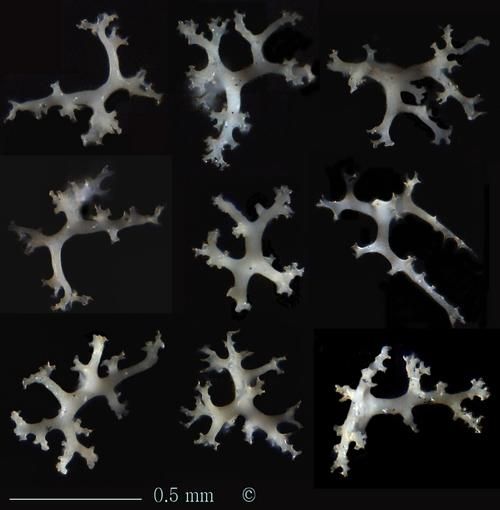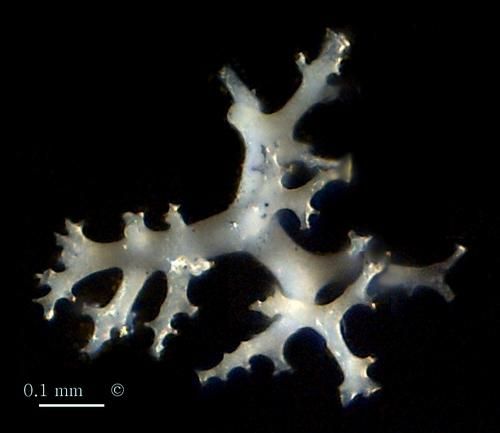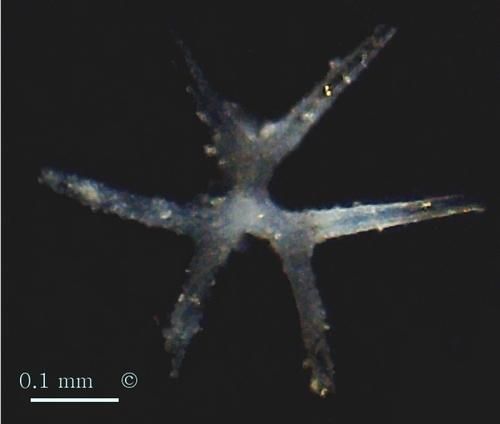_subglobosa_001.jpg)
Siphonia (Pachycalymma) subglobosa
Schrammen, 1901
Siphonia species appear to be quite rare in the Upper Campanian strata of Misburg, but are more common in the Lower Campanian of Höver. The Lower Campanian representatives tend to become very tall (often more than 300 mm).
The specimen of Pachycalymma subglobosa shown here has some cortex developped in its basal parts. The paragaster is sourounded by a set of distinct, radial furrows. The ostia are relatively large (1 to 3 mm) and have jagged outlines.
_subglobosa_002.jpg)
The second example of Pachycalymma subglobosa shows the typical, large and jagged, inhalent pores.
The spiculation of Siphonia consists of zygosed tetraclone desmas with smooth arms. The branching of the desma arms of Siphonia species begins closer to the center of the tetraclone, compared to those of Phymatella and related genera (Aulaxinia, Callopegma, Turonia, Craterella, Kalpinella and Paraspelaeum), and the resulting skeletal meshwork thus shows some subtle differences. In particular, Siphonia does not show the syzygial nodes (nodes formed by the union of arms of neighboring desmas) characteristic for the other genera. Dichotriaenes may be present as dermal scleres.

Siphonia tubulosa
Roemer, 1840
The specimen shown here is thought to be equivalent to Siphonia tubulosa (Scyphia tubulosa of Roemer 1840). It differs from Pachycalymma by its club-shaped form and irregular sculpturing.





The following photomicrographs show typical tetraclones and one dermal dichotriaene of Siphonia tubulosa. Notice the onset of branching close to the center of the tetraclones, and compare for instance with Callopegma acaule!